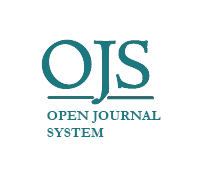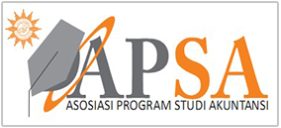![]()
Author Guidelines EditEdit Author Guidelines
AUTHOR GUIDELINES
Type of Contributions
JRAK publishes research articles of Accounting and Finance. The object of the written study may include (but not limited to) public sector themes, Syariah finance, knowledge management, intellectual capital, etc. Since 2016 JRAK has not received articles from any kind of conceptual articles and literary reviews. Submission should be accompanied by filling in author declaration form (click here). Manuscripts submitted in JRAK have not been published and/or are not being processed for publication in other publishers or journals. All manuscripts will be reviewed by two reviewers who are experts in their field with a predetermined assessment standard. After the manuscript is declared accepted, the author will receive a letter of acceptance (LoA) by email and then asked to send a letter of authenticity/non-plagiarism.
General requirements
The Manuscript should be written in English in MS word program. Use single column with double space. All pages in the manuscript should be given a page number, starting at number 1. The paper size used is A4 with a 3.0 cm margin for all sides. The font type used is "Times New Roman" 12pt. The length of the manuscript is between 5000-7000 words. All illustrations (table and figure) should be referenced in the manuscript and presented in the manuscript/not separated on the last page (appendix) and numbered in the order in which they appear and are titled accordingly. The use of foreign terms should refer to predetermined standards (use GLOSARIUM). Use italic font for foreign word. Submission should be organized through OJS (open journal system) in JRAK website: http://ejournal.umm.ac.id/index.php/jrak (not via email).
Manuscript Structure
In general, manuscripts should be arranged in the following order: Title; Authors name and affiliation, Abstract; Introduction (including hypothesis development if any); Method; Results and Discussion; Conclusion; Acknowledgment (optional); and References. SUBTITLE must be written in CAPITAL LETTERS AND THICK (bold capital) and placed on the left side of the page.
TITLE
The title of the manuscript is not more than 25 words. Abbreviations are not allowed except general term in accounting and finance area, for instance: PSAK, IFRS, SMEs, etc. The title of the manuscript is written in English in accordance with the contents of the manuscript. Title script was written with font size 14pt bold. The title is followed by authors name, affiliation (institution), address of institution, and the author's email address.
ABSTRACT
The Abstract is written in English with present tense form, no more than 200 words, using single paragraph with single space. The abstract contains the objectives of study, methods, results, and important research conclusions. References should not be cited in the abstract. Abbreviations used in the abstract should be defined when the abbreviation was first used. Abstract followed by 3-7 keywords in alphabetical order.
INTRODUCTION
Introduction begins with a statement about the issue being written, followed by a theoretical study and a conclusion of some researchs that has been done related to issue (either by the author or other researchers). At the end of this section, it should be clearly stated explicitly the purpose of the study and the differentiator of the research conducted with previous studies.
METHOD
This part should be written clearly how the research is done. For case study research (including non-positivism/qualitative research), this section includes types of research, objects, data, techniques, and stages of analysis. For survey research, this section contains research types, population and sampling techniques, types and sources of data, research instruments, and data analysis techniques.
RESULTS AND DISCUSSION
Results and discussion is presented in one section (not separated) with assisted supporting instruments in the form of tables and/or pictures. The author should interpret the results of the analysis presented by not rewriting the numbers presented in Tables or Figures. In this section it should also be conveyed whether the research carried out is in line or contrary with previous studies.
CONCLUSION
The conclusion presents a summary of the research findings. The conclusions should be written no more than 150 words in narrative form, not numbers. In this section, author might add research limitations and suggestions for next research.
REFRENCES
All references cited in the manuscript should be presented in the References in alphabetical order (A-Z) of the last name, the first name abbreviated (for a second and third author starting from the first name abbreviated, and the last name). References sourced from both journals and books for a maximum of the last 5 years.Unedited libraries should not appear in the references. Writing a references using APA 7th style. The examples of writing a references (note the use of italics and quotes!) as the following:
References from the book
Ulum, I. 2009. Intellectual Capital; Concepts and Empirical Studies. PT. Graha Science. Yogyakarta. Watts, RL and JL Zimmerman. 1986. Positive Accounting Theory. Prentice-Hall. Englewood Cliffs. NJ.
Roos, J., G. Roos, NC Dragonetti, and L. Edvinsson. 1997. Intellectual Capital: Navigating in the New Business Landscape. Macmillan Business. Houndsmills
References from journals, magazines, newspapers, etc.
Bontis, N. and J. Fitz-enz. 2002. "Intellectual capital ROI: a causal map of human capital antecedents and consequents". Journal of Intellectual Capital . Vol. 3 No. 3. pp. 223-47.Abidin. 2000. "Effort to Develop New Measures". Media Accounting. Issue 7. Year. VIII. pp. 46-47.
Hanafi, M. 1998. "New Share Emission Efficiency at Jakarta Stock Exchange". KELOLA Gadjah Mada University Business Review. No. 17 / VII / 1998, h. 88-106.
Reference from internet
Pulic, A. 2000. "VAIC TM - an accounting tool for IC management". available online: www.measuring-ip.at/Papers/ham99txt.htm (accessed on 2nd November 2006).
References from proceedings, theses, dissertations, papers ( unpublished )
Miller, M., BD Du Pont, V. Fera, R. Jeffrey, B. Mahon, BM Payer, and A. Starr. 1999. "Measuring and reporting intellectual capital from a diverse Canadian industry perspective". Paper presented at the International Symposium on Measuring and Reporting Intellectual Capital: Experiences, Issues, and Prospects. June. Amsterdam.
Ulum, I. 2008. "Intellectual capital and financial return of listed Indonesian banking sector". Proceeding international research seminar and exhibition. Lemlit UMM. Poor.
TABLE
Table title is wirtten using Arabic numerals (1,2,3 and so on) and put on above. The lines in the table use only three (3) horizontal lines without a vertical line. Table as far as possible not from scan results and copy-paste by output/result of statistic software. Brief and important information about table contents is permitted. Each table must list the source and be listed under the table except the statistics output table. example:
FIGURE
The title of figure placed below the illustration and in the center. Brief and important information about the contents of illustrations is permitted. Each image must list the source and be listed below. Example:
Editor in Chief
Jurnal Reviu Akuntansi dan Keuangan
Prof. Dr. Ihyaul Ulum, M.Si., Ak., CA.
Editor's Note
JRAK is published three times a year starting in edition 10 no. 1 year 2020. Each issue contains 15 articles
Make a new submission to the Editor's Note section.
Copyright Notice EditEdit Copyright Notice
Authors who publish with Jurnal Reviu Akuntansi dan Keuangan (JRAK) agree to the following terms:
- For all articles published in JRAK, copyright is retained by the authors. Authors give permission to the publisher to announce the work with conditions. When the manuscript is accepted for publication, the authors agree to automatic transfer of the publishing right to the publisher.
2. Authors retain copyright and grant the journal right of first publication with the work simultaneously licensed under a Creative Commons Attribution-ShareAlike 4.0 International License that allows others to share the work with an acknowledgment of the work's authorship and initial publication in this journal.
3. Authors are able to enter into separate, additional contractual arrangements for the non-exclusive distribution of the journal's published version of the work (e.g., post it to an institutional repository or publish it in a book), with an acknowledgment of its initial publication in this journal.
Authors are permitted and encouraged to post their work online (e.g., in institutional repositories or on their website) prior to and during the submission process, as it can lead to productive exchanges, as well as earlier and greater citation of published work (See The Effect of Open Access).
Privacy Statement EditEdit Privacy Statement
The names and email addresses entered in this journal site will be used exclusively for the stated purposes of this journal and will not be made available for any other purpose or to any other party.









